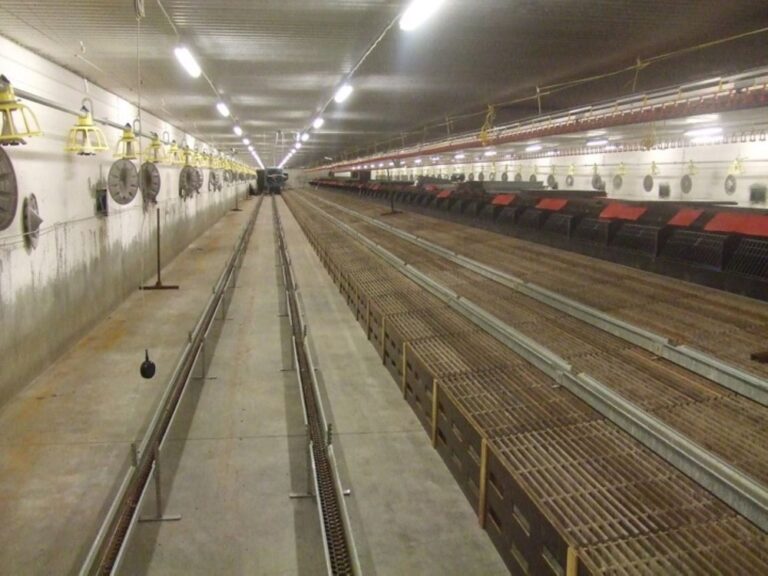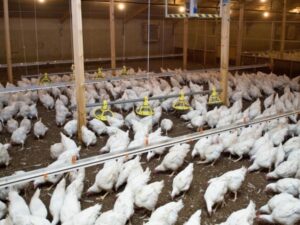By Andrea Pizzabiocca, senior manager of technical services in Italy, Cobb Europe
Transfer is one of the most critical moments in the life of our breeders. If done correctly, transfer can positively impact the final performance of a flock. The aim should be to minimise stress related to this operation allowing breeders to achieve their genetic potential. Planning is key to a smooth transfer, and includes both the actual movement of the birds, as well as the preparation of rearing and production farm environments.
Transfer stress can be minimised by establishing similar environments between rearing and production facilities. This is especially important for the drinking and feeding equipment which, if different, could delay consumption as the flock adapts to the different systems. Delays in water and feed consumption could then lead to a loss of condition resulting in delayed response to light stimulation, later onset of production, lower peak and reduced persistence of egg laying.
To maintain the flock condition, use the same drinking system in both rearing and production. But remember, in a production facility, drinkers are over the slats and normally in front of the community nest system (to reduce floor eggs and promote hydration). Therefore, in rearing, birds must be trained to jump on slats to drink. Place perches or elevated training slats in the rearing houses to teach birds to jump and retrofit the rearing facility with one full line of drinkers above training slats. Position the training slats 60 to 70 cm wide so the birds will be able to drink from both sides of the nipple line. At transfer, the birds will understand how to jump and locate waterers positioned above the slats. Jumping will also stimulate male and female activity and help the birds to discover the community nests.
Jumping behaviour can also be encouraged by manipulating the chain feeding system. If using chain feeders in rearing, hang them high enough that the trough does not catch litter, but low enough that the birds cannot pass below the track. This position will require birds to jump from one side to the other side of the feeding track. Rearing facilities that use a pan feeding system must utilise training slats to properly prepare the birds for smooth transfer.
Inconsistencies between feeding systems in rearing and production facilities can also be addressed by first transferring the sex that will have a different feeding system in production and give them time to acclimate before introducing the other sex. Alternatively, consider placing some production facility style feeders in the rearing facility. Place these supplemental feeders, starting at week four or five, close to the rearing style feeders and fill them manually with some feed. This teaches birds to eat from both types of feeders and recognize production style feeders at transfer.
The cleaning and disinfection procedures on the production farm must be done at least one week before transfer. All equipment including feeders, drinkers and lighting must be tested and fully operational. Production farms in areas with cold temperatures should be equipped with functional heating systems.
Trucks, crates or containers (modules) used for transfer must be cleaned and disinfected thoroughly. Damaged crates must be repaired or substituted. To reduce stress, have a detailed and precise plan that includes the correct number of crates, trucks, and well-trained personnel. The use of trucks, crates, and crews that are dedicated to the farm is advised, but if not possible, make sure that a 72-hour period has passed since equipment and crews were exposed to other birds.
The ideal age for transfer is between 20 and 22 weeks. If birds are transferred to open-sided houses during summer, body weight and condition must be correct at the time of transfer or egg-laying production and persistence can be negatively impacted. In dark-out production houses, ensure females do not experience a reduction in light intensity. A reduction in light intensity can also negatively impact egg production. In fact, it is better to slightly increase light intensity in the first week in the production house. The timing of the transfer should also take into account the season of the year. In hot weather conditions, transfer after midnight or in early morning to avoid thermal stress to the birds.
To minimise stress and transportation mortalities on the day of transfer, feed the birds after they arrive at the production facility and not before. When birds arrive at the production farms, take them out of the crates and release them directly on the slats. To make sure birds do not lose weight and condition at transfer, give extra feed (150% of standard) the first day. It is also critical to constantly walk through the houses encouraging birds to move around, which will increase the chances that they find feed and water. The day after transfer, check crop fill in both females and males to evaluate feed and water intake. Place birds with hard crops or no feed in the crop on the slats close to the waterers. Remember, birds with good fleshing and fat reserves will rapidly lose condition if they do not find water and feed because they will burn their fat stores for energy and lose weight.
The success of the transfer process can affect the sexual uniformity and determine the final results of a flock. Attention to detail will strengthen the full reproductive and genetic potential of your birds. Your time and efforts at transfer will be repaid with a profitable operation.



